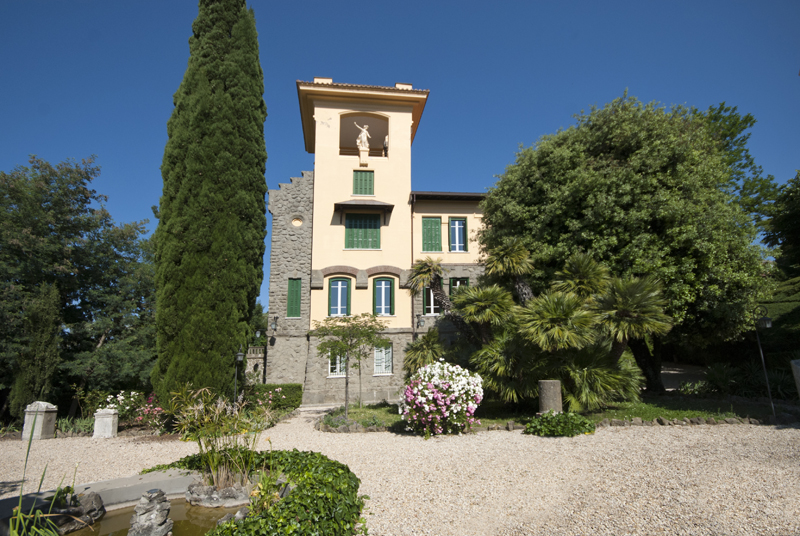The Villino was built in the first years of the twentieth century for the Italian mathematician Vito Volterra. The complex remains today still the property of the Volterra family. Throughout time the villa has maintained the characteristic physiognomy of the country house utilized during the summers by the Roman high bourgeoisie. It was designed by the architect Giulio Magni.
The original drawings, the execution details, the correspondence and the progress records of the original project are still preserved in their entirety. The design was conceived to provide extremely comfortable and modern facilities for the epoch in which it was built, utilizing best quality materials. A comparison between the original project details and the villa in its present state reveals that the latter has never undergone any substantial alterations.
The park surrounding Villa Volterra is of notable historic value because it represents a typical, yet now rare, example of early 20th century gardens. At Villa Volterra this finds expression mainly in the presence of an artificial mound named by the owners from the start as la montagnola, the little mountain. The montagnola is covered with thick boxwood planting trimmed in the shade of a dome into which curved paths are carved through the greenery forming a pseudo-maze. Scattered archeological Roman fragments accompany the way to the summit which, when reached, offers the visitor a seat in the shade of an old linden tree surrounded by wild irises and cyclamens and an elevated overall view of the gardens.


 Visit Castelli Romani
Visit Castelli Romani 

